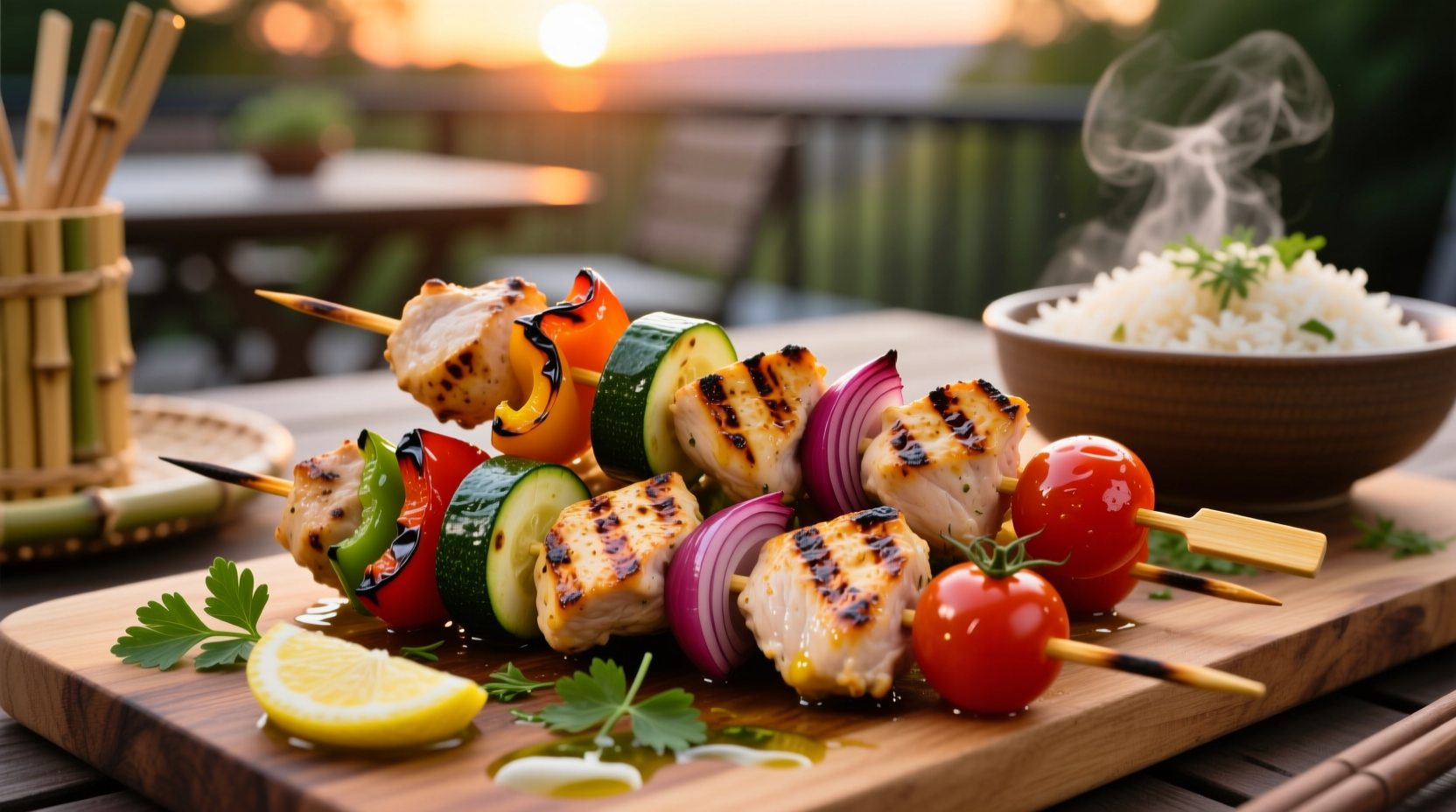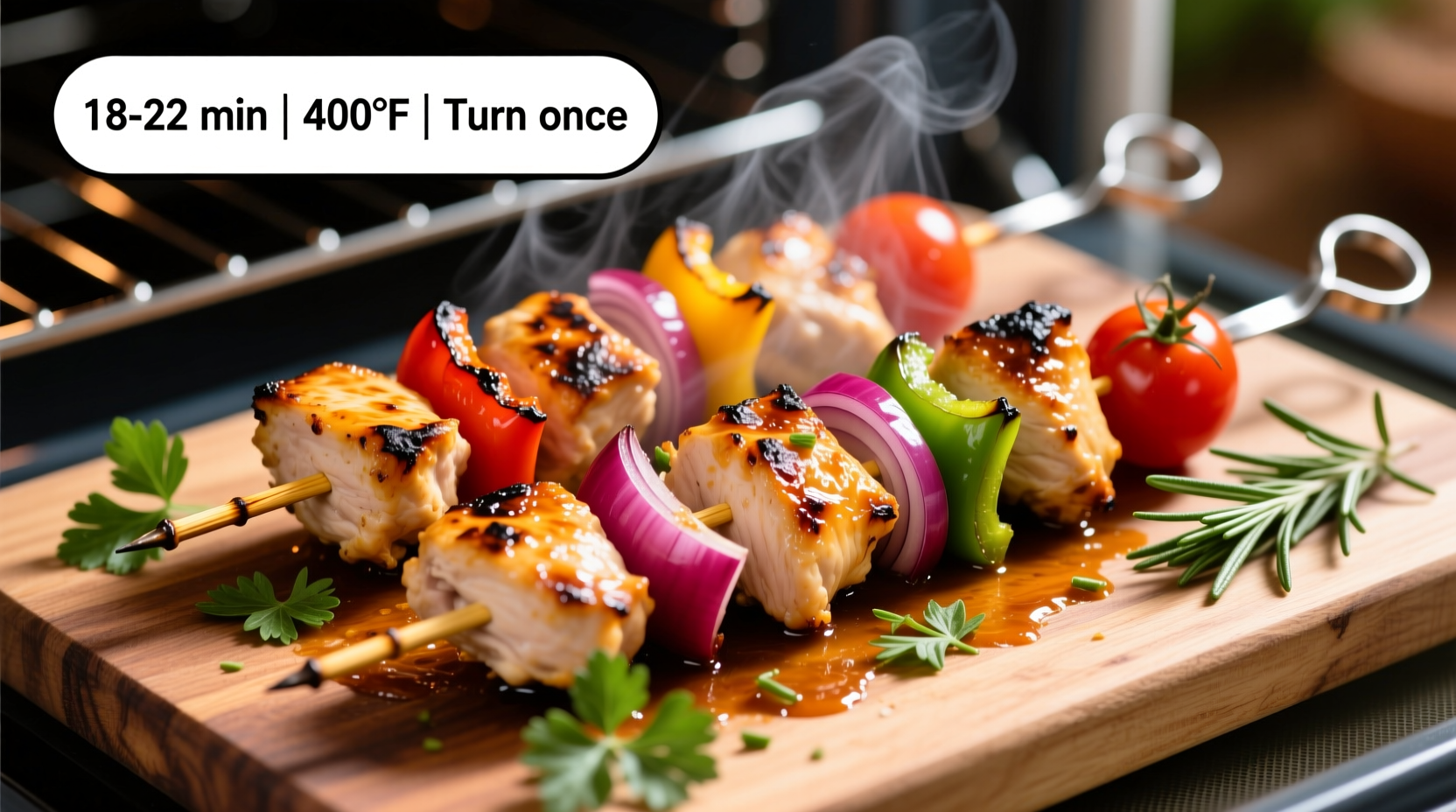Perfectly cooked chicken kabobs—juicy, flavorful, and safely prepared—start with precise timing knowledge. Many home cooks struggle with undercooked centers or dry, overcooked meat because they rely solely on visual cues without understanding the science behind proper poultry cooking. This guide delivers exact timing parameters based on USDA food safety standards and professional chef techniques, so you can serve restaurant-quality kabobs with confidence every time.
Why Timing Matters for Chicken Kabobs
Getting the timing right for chicken kabobs isn't just about flavor—it's a critical food safety issue. Undercooked chicken can harbor harmful bacteria like salmonella, while overcooked chicken becomes dry and unappetizing. The sweet spot exists between these extremes, and it's narrower than most home cooks realize.
Unlike whole chicken pieces, kabobs present unique challenges because the small, cubed chicken cooks faster but also dries out more quickly. When vegetables are added to the skewers, they create additional variables since different vegetables release moisture at different rates, affecting the overall cooking environment.
Core Cooking Parameters: Time, Temperature, and Verification
The most reliable method for determining doneness combines precise timing with internal temperature verification. While timing provides a useful framework, the only guaranteed way to ensure safety is measuring the internal temperature with a reliable meat thermometer.
| Oven Temperature | Chicken Cube Size | Approximate Time | Internal Temp Target |
|---|---|---|---|
| 375°F (190°C) | 1-inch cubes | 18-22 minutes | 165°F (74°C) |
| 400°F (200°C) | 1-inch cubes | 15-18 minutes | 165°F (74°C) |
| 425°F (220°C) | 1-inch cubes | 12-15 minutes | 165°F (74°C) |
| 400°F (200°C) | 1.5-inch cubes | 20-25 minutes | 165°F (74°C) |
According to the USDA Food Safety and Inspection Service, all poultry must reach a minimum internal temperature of 165°F (74°C) to be considered safe for consumption. This temperature destroys harmful bacteria that may be present in raw chicken. The FDA Food Code specifies this same temperature standard for commercial food preparation.
Your Step-by-Step Cooking Journey
Preparation Phase: Setting Yourself Up for Success
Before your chicken even approaches the oven, proper preparation determines your success. Cut chicken into uniform 1-1.5 inch cubes—this consistency ensures even cooking. If using wooden skewers, soak them in water for at least 30 minutes to prevent burning. Space chicken pieces with a small gap between them rather than packing tightly, which allows heat to circulate properly.
Marinating time affects cooking behavior. Acidic marinades (containing lemon juice or vinegar) can partially cook the exterior of the chicken, potentially leading to uneven cooking. For best results, marinate for 2-4 hours—longer than 12 hours can make the texture mushy.
Oven Setup: Creating the Ideal Cooking Environment
Preheat your oven to 400°F (200°C) with the rack positioned in the center. Line a baking sheet with parchment paper or use a wire rack over a baking sheet to promote air circulation. The wire rack method prevents the bottom of the kabobs from steaming in their own juices, yielding more even browning.
Place assembled kabobs on the prepared baking sheet, leaving space between each skewer. Overcrowding creates steam that lowers the effective cooking temperature and prevents proper browning.

Cooking Process: Timing and Technique
Place kabobs in the preheated oven and set a timer for 8 minutes. After 8 minutes, carefully flip each kabob using tongs. Continue cooking for another 7-12 minutes, depending on your chicken cube size. The total cooking time should be 15-20 minutes at 400°F.
During the final 5 minutes of cooking, monitor closely. Chicken can go from perfectly cooked to dry in just a few minutes. The visual indicators of doneness include:
- No visible pink color in the thickest part of the chicken
- Juices run clear when pierced (not pink or red)
- Exterior has developed a light golden-brown color
The Critical Resting Period
Remove kabobs from the oven when they reach 160-162°F (71-72°C), not the target 165°F. The residual heat will continue cooking the chicken during the 5-minute resting period, bringing it to the safe temperature without overcooking. This carryover cooking phenomenon is well-documented in food science and prevents the common mistake of overcooked chicken.
Troubleshooting Common Kabob Problems
Dry or Overcooked Chicken
This typically happens when:
- Chicken pieces are too small (under 1 inch)
- Oven temperature runs hotter than indicated
- No resting period is observed
Solution: Use a reliable oven thermometer to verify actual temperature, and always remove chicken at 160-162°F rather than waiting for 165°F in the oven.
Undercooked Centers
If your chicken appears done on the outside but remains pink inside:
- Chicken pieces were too large (over 1.5 inches)
- Skewers were overcrowded, creating steam
- Oven temperature was inaccurate
Solution: Cut chicken into uniform 1-1.25 inch pieces and use an oven thermometer to verify actual temperature. If undercooked, return to oven for 2-3 minute increments while monitoring internal temperature.
Pro Tips for Perfect Kabobs Every Time
Vegetable Pairing Strategies
When adding vegetables to your kabobs, group them by cooking time:
- Quick-cooking vegetables (zucchini, bell peppers, mushrooms): add at the beginning
- Slower-cooking vegetables (potatoes, onions, carrots): par-cook before skewering
This prevents some vegetables from becoming mushy while others remain undercooked.
Marinating Science
For optimal flavor penetration without texture damage, use a marinade with moderate acidity. Buttermilk-based marinades tenderize without the harshness of vinegar or citrus. The ideal marinating window is 2-4 hours—enough time for flavor absorption without protein breakdown that leads to mushiness.
Temperature Verification Protocol
Insert your thermometer into the thickest chicken piece on the skewer, avoiding contact with the metal skewer itself (which can give false readings). Check multiple pieces since oven hot spots can cause uneven cooking. Always verify temperature in the geometric center of the thickest piece.











 浙公网安备
33010002000092号
浙公网安备
33010002000092号 浙B2-20120091-4
浙B2-20120091-4